The Beatification of the Quiche Martyrs, Photos, comment by Pope Francis
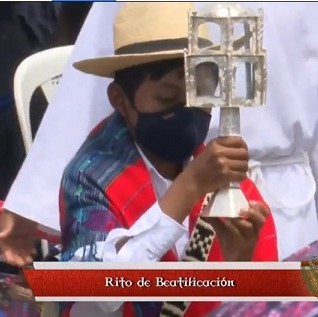
Words from Pope Francis at Ángelus today (25.04.2021)
Last Friday in Santa Cruz de Quiché, Guatemala, Jose Maria Gran Cirera and nine fellow martyrs were beatified: three priests and seven laymen belonging to the Congregation of the Sacred Heart of Jesus missionaries, committed to the defence of the poor, who were killed between 1980 and 1991, when the Catholic Church was persecuted. With living faith in Christ, they were heroic witnesses of righteousness and love. May your example make us more generous and courageous in living the Gospel. Let's give a round of applause for the new Beatos. Pope Francis
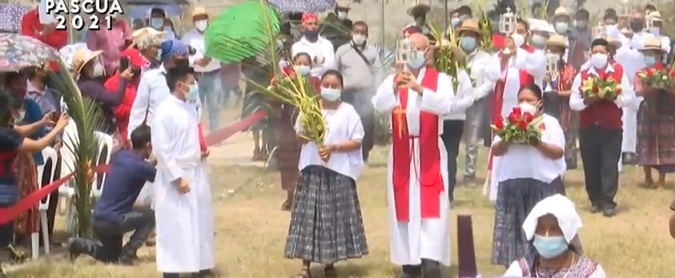
A range of photos from the ceremony. And sections of an article by former Tablet correspondent now with La Croix.
A child-martyr and the so-called defenders of religious freedom/ Robert Mickens | Vatican City
Why the story of a 12-year-old Mayan boy named "Juanito" should trouble Christians in comfy secularized countries who believe they're being persecuted.
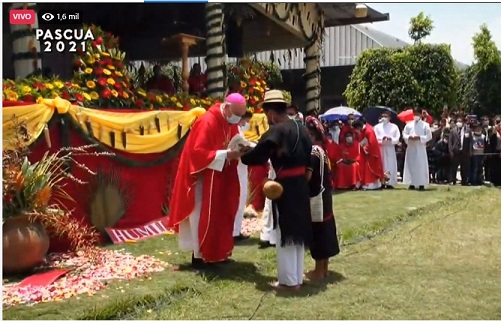
"The blood of the martyrs is the seed of the Church".
That popular phrase is attributed to the prolific early Christian writer Tertullian. Though badly translated from the original Latin, its meaning is clear nonetheless: try to annihilate the followers of Jesus Christ and they will sprout up in even greater numbers.
The Church venerates its martyrs with special liturgical feast days.
For instance, we just celebrated the feast of St. George. The April 23rd commemoration has been a public holiday in Vatican City since 2013. That's because it's also the "name day" of Pope Francis, whose baptismal name is "Jorge" or George. The Feast of St. George had a particularly poignant meaning this year for the Catholics of Guatemala in the pope's native Latin America. Three Spanish-born priests of the Sacred Heart Missionaries and seven lay catechists of the indigenous Maya people were beatified on April 23 in the Cathedral of Santa Cruz de Quichè.
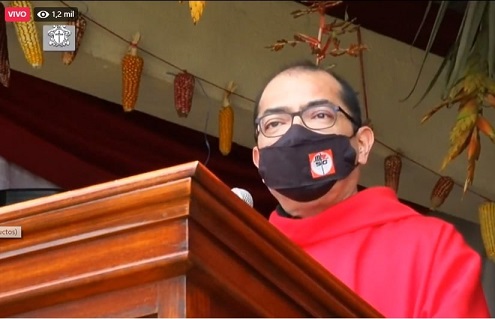
Abzalon, MSC Superior General - and distinctive mask
Guatemalan Cardinal Alvaro Ramazzini, a child of northern Italian immigrants, presided at the beatification Mass, which was made possible last year after the pope signed a decree recognizing all ten as martyrs. The first Native Indians in Central America to be called "blessed". They were killed at various stages between 1980-1991 in the Diocese of Quiché in the western part of the country. The seven lay people are believed to be the very first Native American Indians to be declared "blessed" in Central America.
Perhaps the most notable of these "Martyrs of Quiché" was Juan Barrera, a child-catechist whose family belonged to Catholic Action. Juanito" was only twelve years old when the US-backed and -trained Guatemalan military tortured and killed him in January 1980 "in odium fidei".
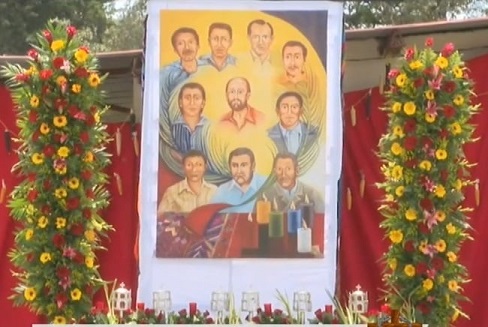
Archbishop Gonzalo de Villa, a Jesuit who was installed last September as head of the Archdiocese of Santiago de Guatemala, called the boy the "proto-martyr" of the group. The Spanish-born archbishop, whose family immigrated to the Central American country when he was only eight years old, choked up and held back tears during a prayer service the evening before the beatifications as he paid tribute to the child-martyr Juanito. But he said it was a day of great joy for Catholics in Guatemala, who were hounded by government forces for allegedly siding with leftist guerrillas during an undeclared and brutal civil war that dragged on from 1960-1996.
An estimated 200,000 people were killed or made to disappear during the long and vicious war. They included Catholic missionaries, priests and women religious, even from the United States. But most of the victims were Mayans, and the poor indigenous Catholics who lived in the administrative Department of El Quiché were among those most hounded by pro-government forces. "It was enough to have a Catholic bible or rosary to be targeted"
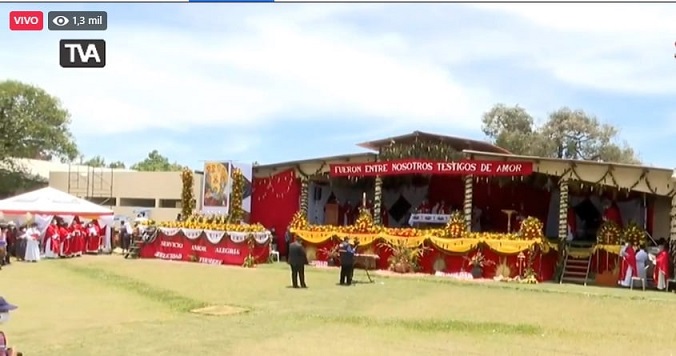
"Thousands of Catholics, especially catechists, were killed at that time," recalled the Sacred Heart Missionaries. A missionary bishop from that era noted that "it was enough to have a Catholic bible or a rosary to be classified as a guerrilla member and, therefore, a prisoner of death". This was well-known. And when Pope John Paul II visited Guatemala in February 1996 -- nearly a year before the final peace accords were signed -- there was still the feel of persecution in the air.
But many Guatemalan Catholics, and the missionaries who came to help them during that long civil war, were not so fortunate. Some of them -- like the Blessed Stanley Rother of Oklahoma -- have already been officially recognized as martyrs by the Vatican. Countless others remain unknown or forgotten. We'll probably never know all of their names.
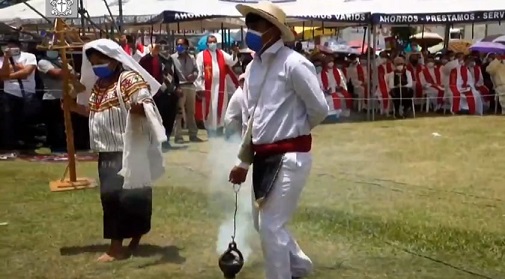
However, the Martyrs of Quiché should humble Catholics who live in affluent, secularized countries, especially when we or our spiritual leaders complain that our religious freedoms are being eroded or outright denied. We should be especially ashamed and critical when we, or those who speak in our name, have the audacity to claim that we face persecution for our beliefs. But that is the type of rhetoric some Catholics have used during the coronavirus pandemic, while protesting the forced closure of churches and schools for health emergency reasons. Others have been whinging and whining about the marginalization and even persecution of Catholics in Europe and the United States long before COVID-19 arrived.
That's not what happened to Blessed Juanito Barrera. Guatemalan soldiers, who were very possibly trained by the CIA, took this 12-year-old boy to a shallow stream and flayed the soles of his feet. They forced him to walk on the stones of that riverbed before they cut off his ears and broke his legs. The soldiers then shot Juanito several times. Later when his lifeless body was recovered, a rosary was found in the pocket of his trousers.
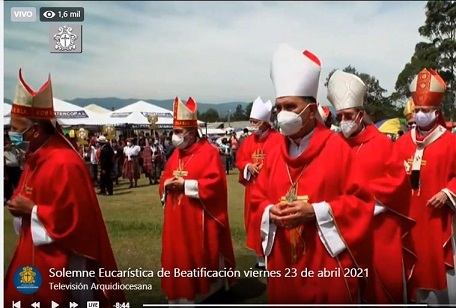
Juanito and the other martyrs who were beatified on April 23 lived in what was then called the Diocese of Santa Cruz de Quiché. It was changed to, simply, the Diocese of Quiché in the year 2000. The Holy Cross was dropped from the name, but it remains the most visible symbol for all who profess to be followers of Jesus of Nazareth, one who was tortured and then murdered on a cross. He put up no resistance and harshly rebuked those of his followers that did. Jesus "endured the cross, disregarding the shame of it".
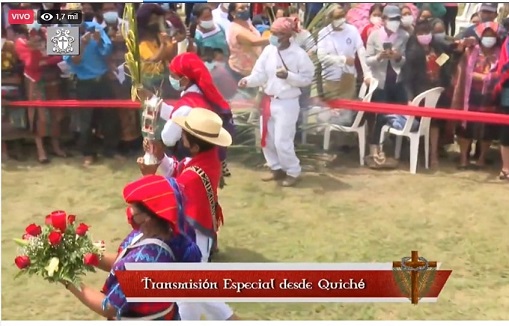
This is something worth meditating on next June 4th when the Church of Guatemala celebrates Feast of the Martyrs of Quiché.